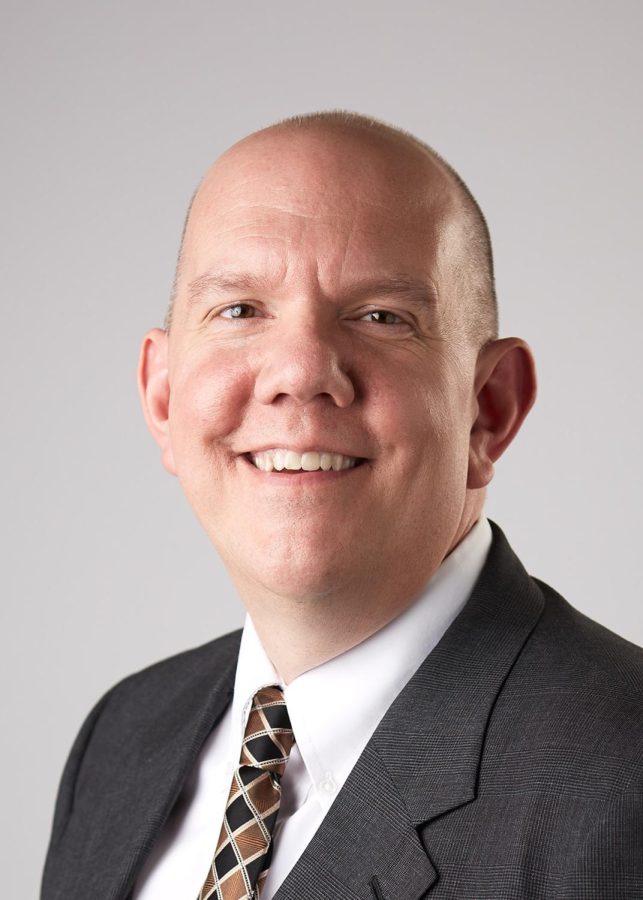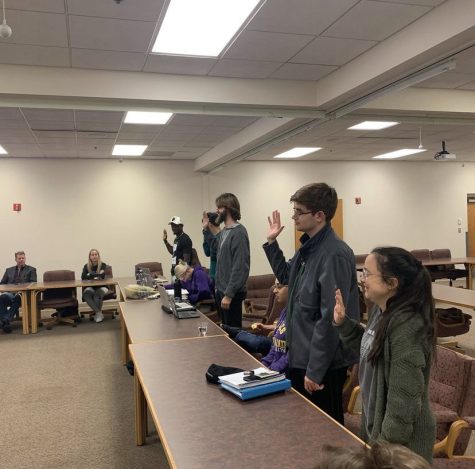Enrollment numbers slightly down this academic year
Keith Ramsdell, who is VP of Enrollment and Marketing
The numbers are finally in on enrollment across the first-year students, upper-class students, graduate and international students.
The number of full-time, first-year students, according to Keith Ramsdell, VP of Enrollment Management and Marketing, is 466, which is flat compared to last year’s number of 476.
“So, when we think about where students come in to enroll, so the total number right now, the Census number is 466,” said Ramsdell. “Compared to 476 a year ago, they are down slightly.”
Even though the full-time, first-year students are slightly down but, as Ramsdell puts it, “there are some discrepancies in the data.”
Originally, before the numbers were official, the numbers were projected to be slightly up, but once the numbers were in, they dropped only slightly down since seven of the first-year, full-time students were international, but came in with transfer credit, which moved them into the group of eleven first-year, part-time students. This created more first-year, part-time students.
When looking at the number of upper-class students, Ramsdell pointed out the trend of smaller classes of upper-class students due to those classes being in the height of COVID-19, so the numbers were down in the junior and senior classes.
The transfer numbers this year were projected of what Ramsdell originally intended what they were going to be, which was flat.
“So the number of transfer students, we knew that that number was going to be lower, and it wasn’t off by as much as we thought,” said Ramsdell.
Last year, there were 68 transfer students and this year, there are 64 transfer students. The original projection, before the year started, was 71 transfer students, but Ramsdell explained this decrease was no surprise.
“This year, [there is a] very slight decrease in the transfer numbers, but transfer numbers are down across the country,” he added.
In the future, AU is anticipating seeing higher numbers of transfer students moving forward, especially, working with military and veteran services to connect with students from the Community College of the Air Force (CCAF) to help increase the numbers.
The same occurred with the graduate students as the numbers were also slightly down like predicted originally.
There were a few graduate programs that did not lose students but went in numbers such as the physician’s assistant, which they were predicting to already be up, and the doctor of nurse practice.
Ramsdell pointed out that one of the certificate numbers was down, which was the school nurse certificate due to it no longer being required in Ohio for school nurses.
“For a school nurse, like in a high school or in a junior high, it used to be required in Ohio that they had that certificate,” said Ramsdell. “So if you didn’t need it, why would you spend the money to go get it?”
The MBA program, here at AU, in face-to-face instruction was up, which was not a surprise.
Undergraduate international students went from 18 to 26 this semester, and the total number of graduate international students went from 15 to 30.
“Our total MBA students are up and our MBA international students are up, so we have started to see our international students,” said Ramsdell.
The biggest increase in the admission numbers was the number of international students. Originally, it was predicted that the number of international students on campus would be extremely low, but with the visas that went through, the international students went up in numbers.
“We went from 18 to 26 this semester, and the total number of graduate international students went from 15 to 30,” said Ramsdell.
The number of international students was able to rebound this semester and make a comeback from what was originally projected.
In some other areas of numbers, there are a few record breakers. Both the numbers of Ashbrook Scholars and Honors saw record-breaking increases. Ashbrook received a total number of 61 and Honors programs got a total number of 62 new students.
Moving forward, AU is implementing its first-ever strategic enrollment plan and the plan will be for managing enrollment growth over the next 3 to 5 years.












